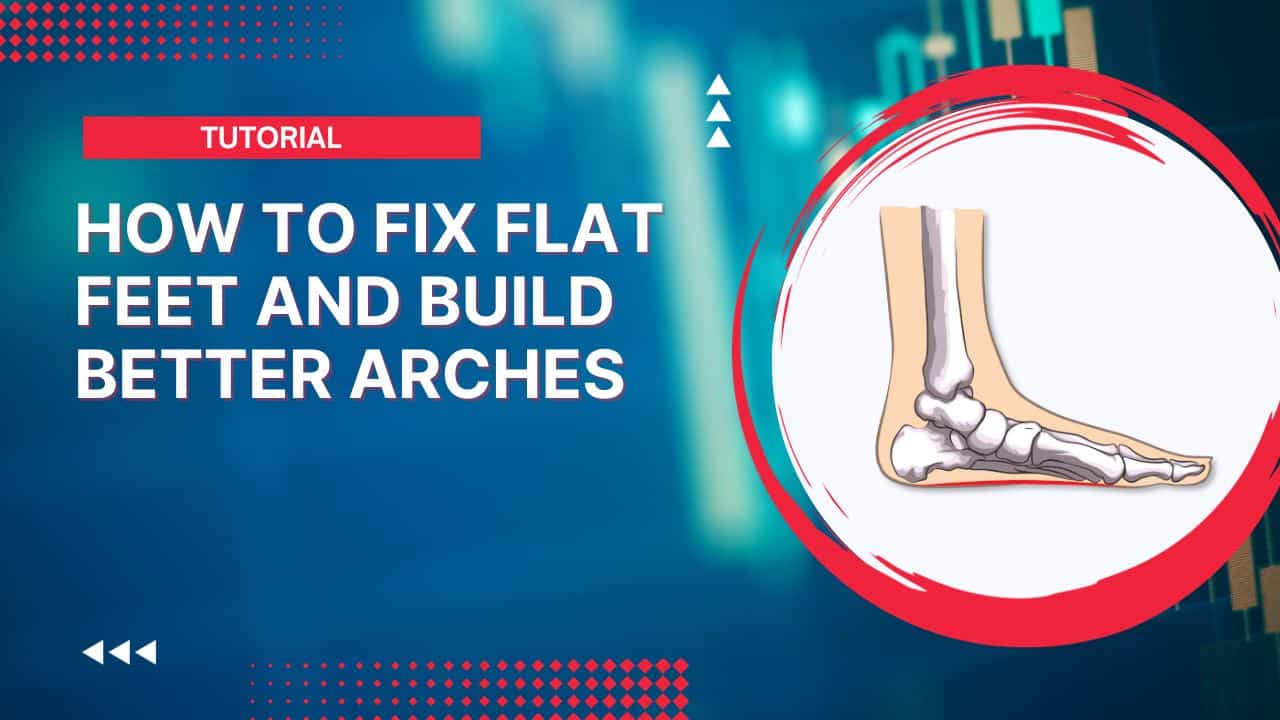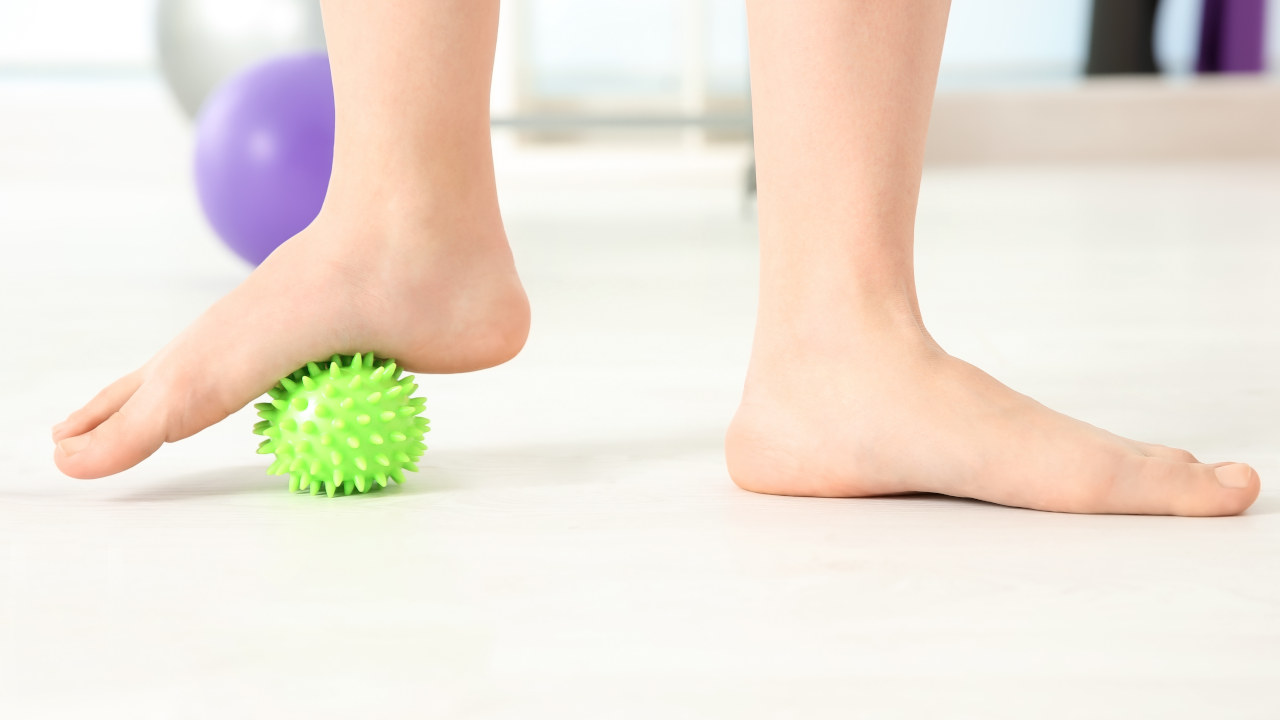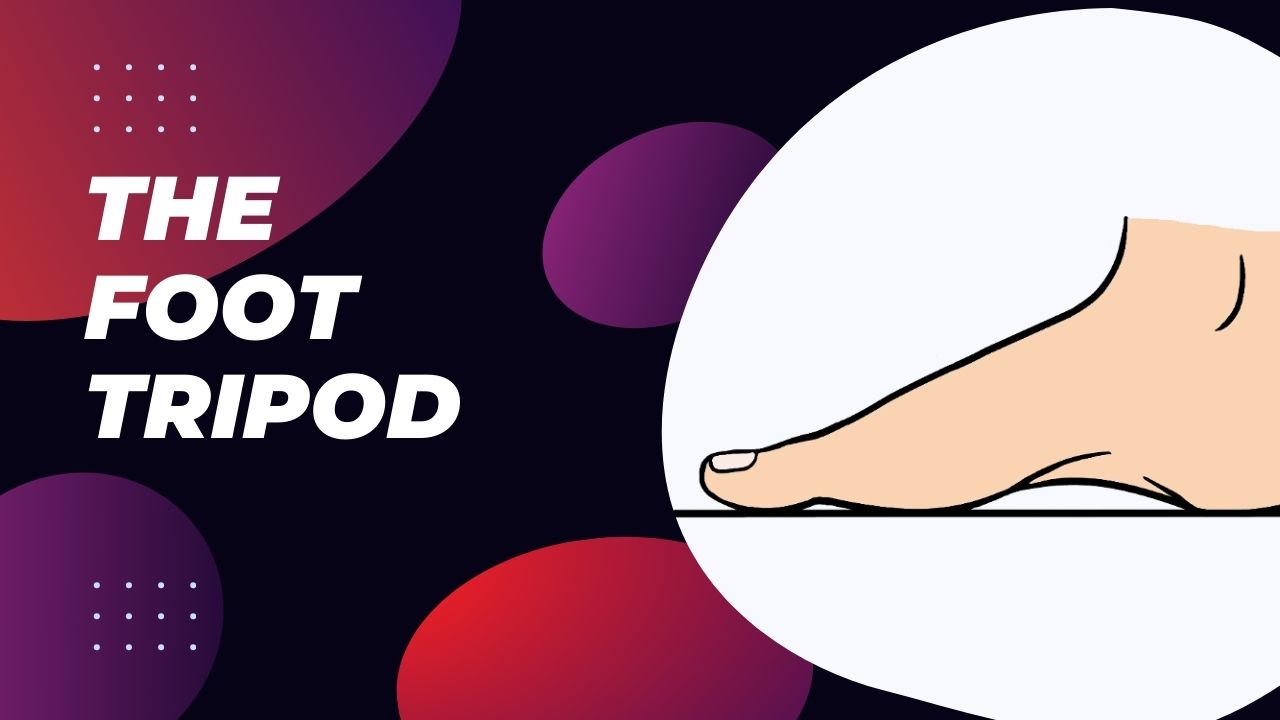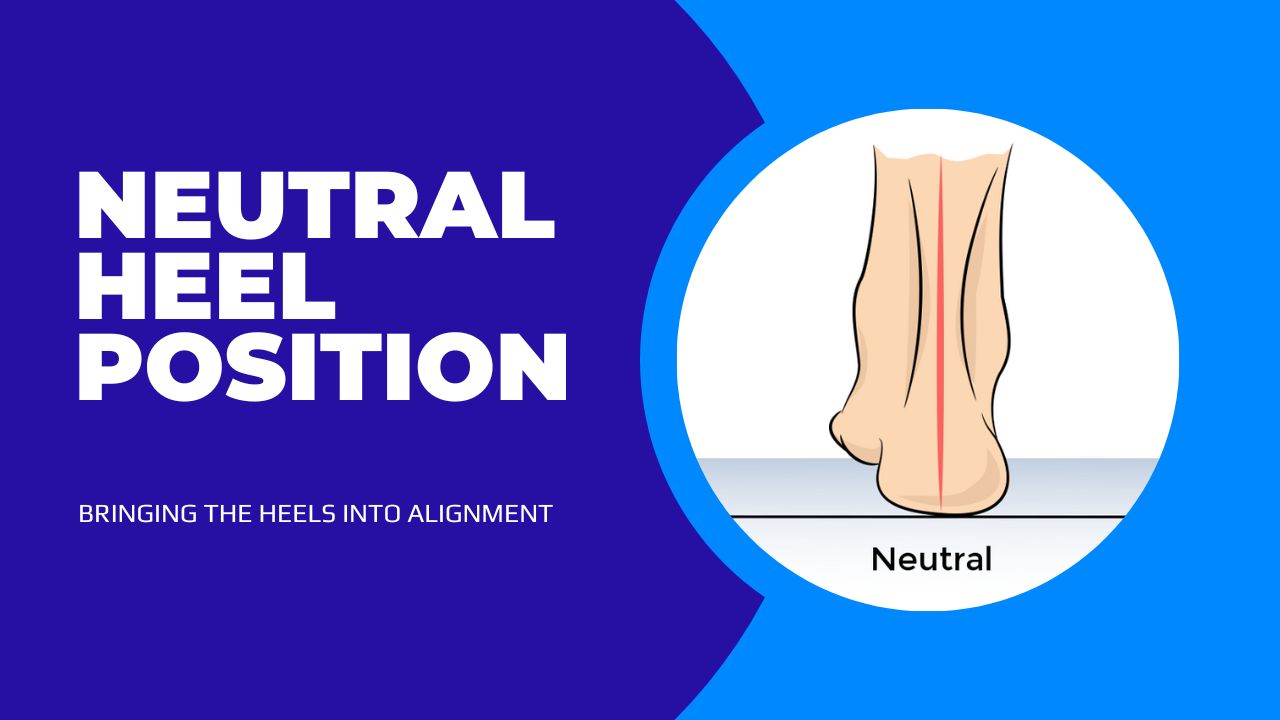Several years ago I created this site as part of a project to see if I could fix my flat feet with exercise. After several months of training, I developed normal arches in my feet.
The following guide provides an overview of the flat foot correction process.
What are Flat Feet?
Before getting into the details of the program, let’s first review some basic information about flat feet.
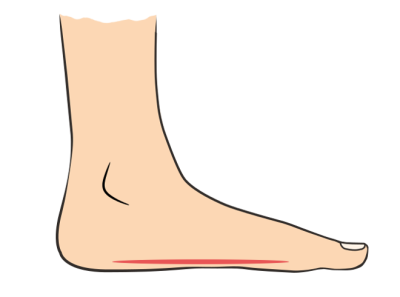
Flat feet, also known as pes planus or fallen arches, is a condition characterized by the absence of an arch on the inside of the foot.
The condition has been associated with genetics, early shoe-wearing in childhood, obesity, and several other factors.
There are two main types of flat feet: flexible and rigid.
Flexible Flat Feet
Flexible flat feet are the most common type. A flexible flat foot is a foot that has the ability to form an arch but the arch flattens when weight is put on the leg.
Checking For Flexible Flat Feet
There are generally a few ways to check for a flexible flat foot, including:
- if an arch is present when seated with the foot dangling in the air,
- if an arch forms when standing up on the toes, or
- if an arch forms with flexing the big toe up by hand.
Rigid Flat Feet
A rigid flat foot cannot form an arch. This is usually the result of how the bones are shaped or formed in the foot. This condition is uncommon and is unlikely to change with exercise.
Other Types of Flat Feet
Besides rigid flat feet, there are several other types of flat feet.
A fairly common one is fallen arches or acquired adult flatfoot. This is when a flat foot develops in a person who previously had normal arches. It’s thought that at least some of these cases are simply a progression of a very mild form of flexible flat feet.
Flat feet may also be seen with:
- conditions that cause spasticity or contracture of the heel cord (e.g. cerebral palsy) or other neurological conditions,
- certain disease processes (e.g. rheumatoid arthritis, posterior tibialis tendon dysfunction) or
- injuries that alter the normal anatomy or functioning of the foot.
And even though many cases of flexible flat feet can improve (and research supports this), all individuals are different. So the program I followed may not be effective or even appropriate for some cases.
Fundamental Concepts for Correcting Flat Feet
Developing the foot arch is similar to learning a new skill. The process requires strengthening weak muscles and stretching tight muscles. But it also requires an ability to control the muscles and movements of the foot.
Two key concepts that are helpful for improving awareness of foot posture are the neutral heel position and the foot tripod.
Neutral Heel
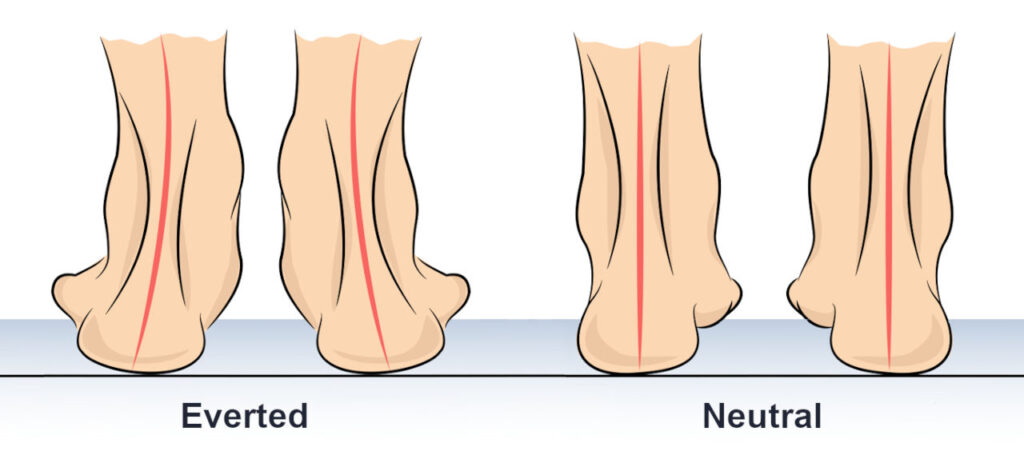
People with flat feet often stand with their heels in an everted or angled out position. This position shifts weight to the inside of the foot when standing, putting pressure onto the arch on the inside of the foot.
The heel normally moves into this position when walking, but if it happens to a large degree this results in excessive pronation (rolling in) of the foot.
The neutral heel position is what I call the straight up and down position of the heel.
Being mindful of holding a neutral heel position can improve foot posture by strengthening the muscles that invert the heel (e.g. posterior tibialis muscle). Also, many of the flat foot correction exercises are performed with the heel in the neutral position.
Foot Tripod
The foot tripod is a useful way of thinking about how the bottom of the foot contacts the ground.
The three points of the tripod are the:
- Center of the heel
- Base of the little toe
- Base of the big toe
A balance between these points gives the foot stability.
Learning to feel how these tripod points contact the ground is another key to making many of the exercises in the program effective.
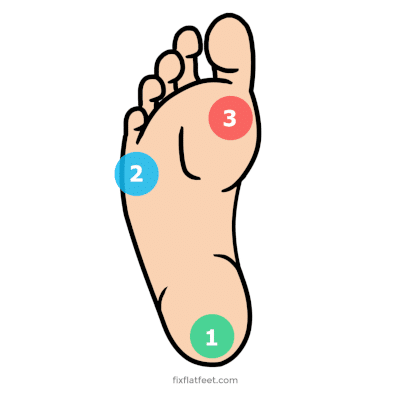
Problems and Fixes
Learning how to fix flat feet requires an understanding of why the arches are collapsing. The factors contributing to flat feet can extend well beyond the foot.
Factors contributing to flat feet:
- Lack of ankle flexibility
- Foot muscle weakness
- Calf muscle weakness
- Posture and walking mechanics
- Hip muscle weakness
- Forefoot supinatus
Lack of Ankle Flexibility
A tight calf muscle or Achilles tendon can force the foot to collapse inward. This was evident in my case because whenever I went into a squat my already flat feet would collapse even farther.
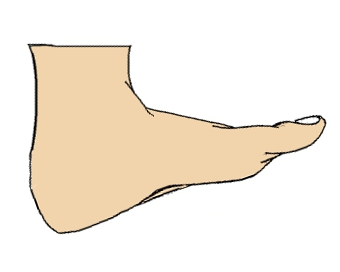
A tight calf muscle restricts ankle dorsiflexion motion. Ankle dorsiflexion is the bending movement of the ankle that brings the top of the foot closer to the shin.
If the foot is on the ground, this motion happens when the lower leg travels over the foot.
Flexibility improves with regular stretching. An example of a stretching exercise for the calf is the standing wall stretch.
See also: Better Calf Stretching for Flat Feet
Foot Muscle Weakness
The arch is like a bridge and the muscles inside the foot tie the two ends of the bridge together. These muscles are part of the system that keeps the arch from flattening when weight is put on the foot.

Besides supporting the arch, the muscles inside the foot (known as the foot intrinsic muscles) stabilize the many joints of the foot. Doing so assists the larger muscles of the lower leg in raising the height of the arch.
These muscle also allow the toes to separate, or create splay.
For a person with flat feet, the muscles inside the foot may be weak or functioning poorly. One of the core exercises for flat feet to target these muscles is the short foot.
Short Foot Exercise for Arch Muscle Strengthening
- Sit in a chair with the foot on the floor and the toes pointed forward.
- Keeping the toes flat on the ground slide the front of the foot back along the floor toward the heel.
- Hold the short foot position for 5-10 seconds.
- Relax and repeat.
Repeat 10 times on each side.
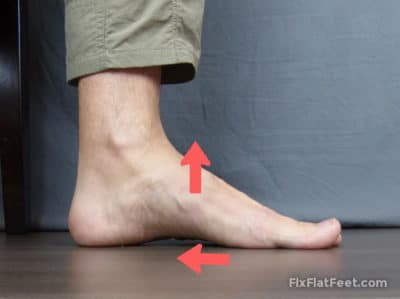
The foot intrinsic muscles also control toe movement. So exercises for toe dexterity play a role in strengthening these muscles. An example would be spreading the toes apart.
Lower Leg Muscle Weakness
There are several muscles in the lower leg that cross the ankle joint to attach onto the foot. These muscles are larger and stronger than the muscles inside the foot.
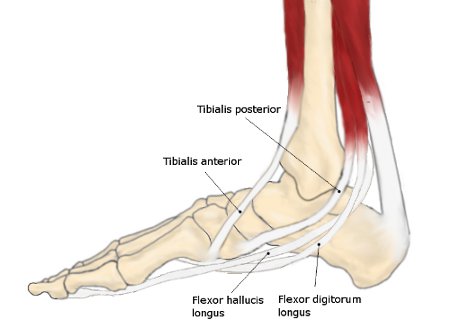
The posterior tibialis is one of these muscles commonly suspected of being weak in people with flat feet. But all the lower leg muscles work together to give the foot stability. One of the best exercises for strengthening these muscles are heel raises.
Pelvic Tilt
Anterior pelvic tilt posture is when the front of the pelvis tilts forward creating a large curve in the lower back.
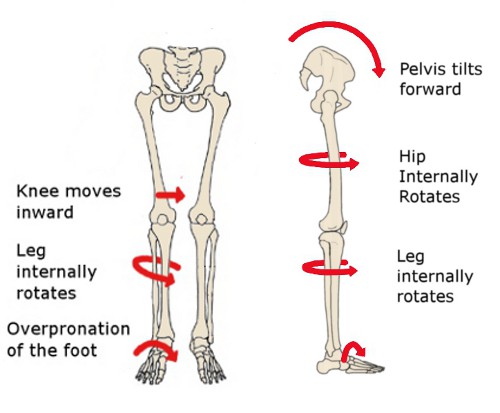
This posture is sometimes associated with changes in the angle of the joints in the hip, knee, and ankle. This change in alignment can place increased stress on the arch.
Getting into Better Alignment
To maintain a good arch shape, I found it necessary to improve my posture. A big part of this in my case was reducing anterior pelvic tilt and maintaining a more neutral position of the pelvis when standing and walking.
In addition to reducing pelvic tilt, bringing the whole system, from head to toe, into better alignment also made a noticeable difference in arch height and stability.
Some general cues I like for posture are:
- stand tall with ears over shoulders,
- keep a neutral pelvis, and
- maintain hips over ankles.
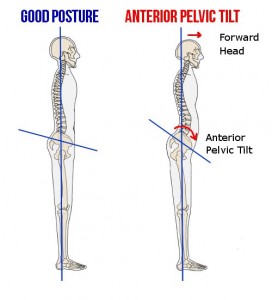
There are many exercises the can help with reducing anterior pelvic tilt and improving posture. I found these exercises were most effective when combined with the practice of being mindful of good posture.
Walking Mechanics
Walking is one of the best exercises for training the foot. Just think, if you take 5,000 steps a day — that’s 5,000 chances to work on arch strengthening.
On the other hand, if the feet are overpronating or rolling inward excessively with each step, then this can negatively affect the arch.
In order to permanently raise my arches, I needed to change the way I was walking to stop my feet from overpronating. Walking mechanics are very complex so it’s difficult to briefly describe all the changes. But I’ll mention three rules that helped a lot.
Three simple rules for walking:
- Keep feet pointed straight ahead (or close to it).
- Keep weight towards the outside edge of the foot.
- Walk with a springy step.
In combination with the exercises and improving posture, I was able to stop my arches from collapsing while walking. At first, I had to frequently think about it. But over time everything became automatic.
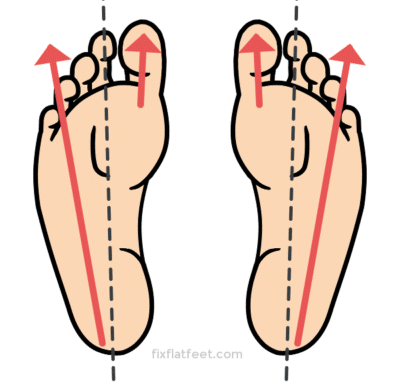
Other Contributing Factors
Hip Weakness
Some of the largest muscles in the body are around the hips. The hip muscles need strength to control the alignment of the leg.
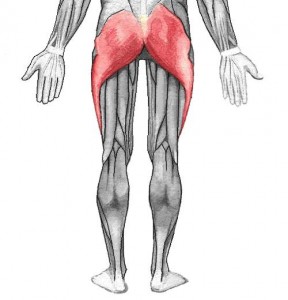
A lack of hip strength can alter the alignment of the leg and increase pressure on the arch.
I don’t find isolated hip strengthening exercises very useful for improving the foot arches. What worked best for me were exercises that combined hip activity with arch strengthening.
Some examples would be balancing on one leg or squatting while trying to maintain an arch in the foot.
Forefoot Supinatus
Forefoot supinatus is the angling or inverted position of the bones in the front of the foot in relation to the heel. This causes the foot to roll inward (pronate) in order to bring the big toe side of the foot down to the ground.

Supinatus is thought to be a way the foot adapts over time to overpronating. I had this only on my right foot and it was hard to reverse. Working on pressing the big toe down while preventing the heel from everting was one way I went about correcting this.
Footwear and Orthotics
There is a lot of debate about what types of shoes are best for people who have flat feet or overpronate. In the past, I wore stability shoes and used arch support insoles.
Part of what inspired me to start working on my arches was the barefoot-running movement. So during this project, I started spending more time barefoot and began wearing thinner, more flexible shoes with less support.
There is some evidence that going with less support strengthens foot muscles and I believe this helped in my case.
Additional Notes
Before starting this project, I never paid much attention to the strength and flexibility of my feet. I felt dependent on shoes and thought my feet needed external support to function properly.
When I began working on this in 2012 there was very little information available on correcting flat feet. I wasn’t sure if building arches was even possible.
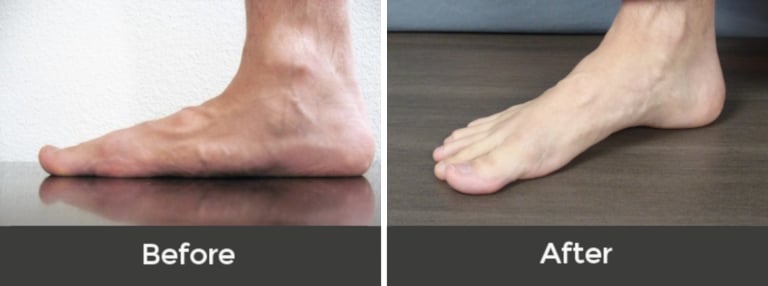
My goal was to perform around 10 minutes of foot exercises everyday. The most dramatic changes happened in the first few months.
I continued to adapt the program as I found new things to work on. It took close to a full year until I was completely satisfied with the results.
I’ve maintained this site over the years since a resource like wasn’t available when I started out on my journey. If you’re interested in learning more about the process, consider signing up for membership for a more in-depth look at the flat foot correction process.
